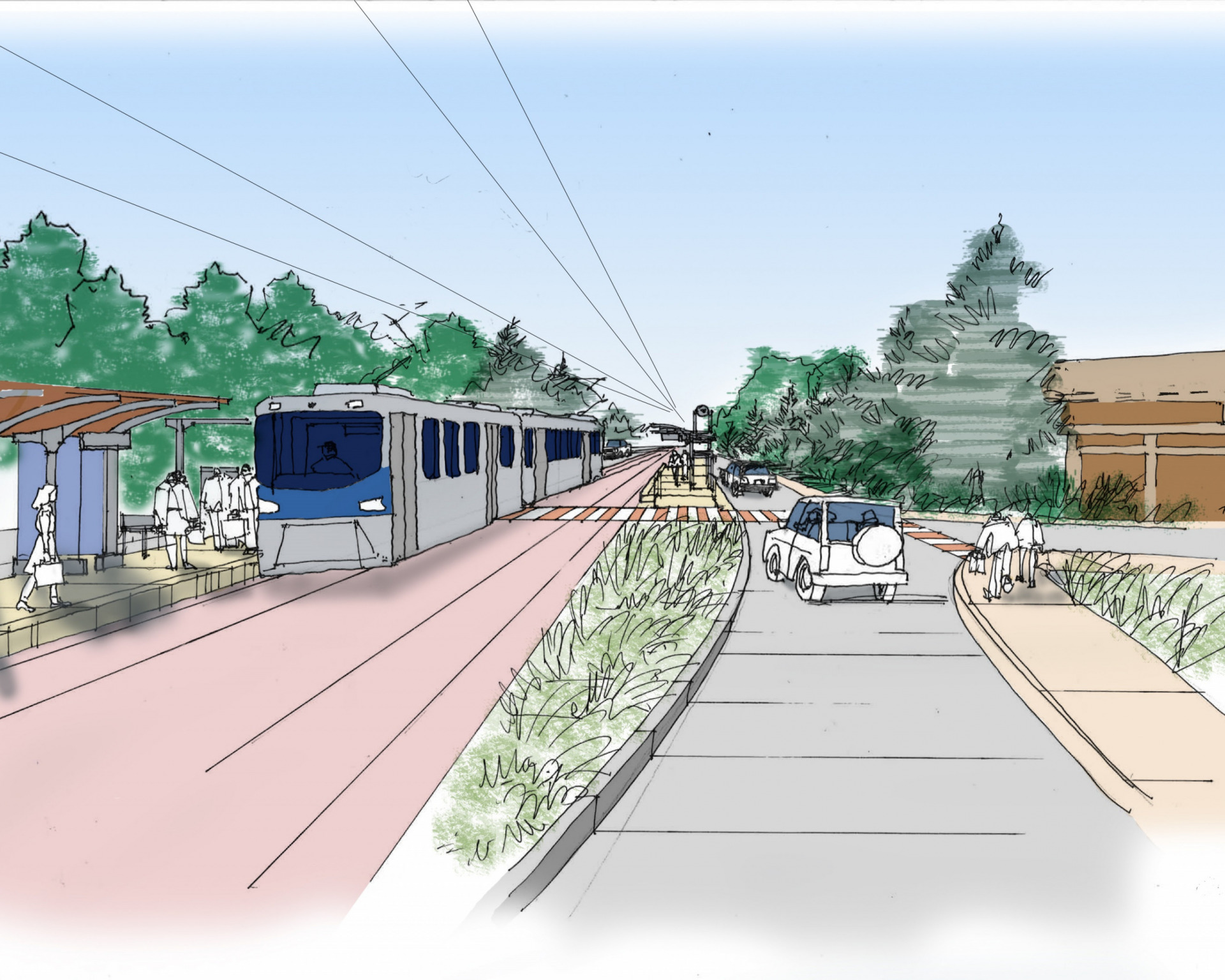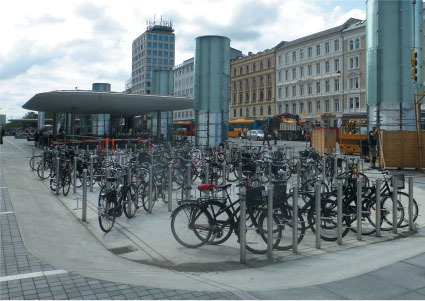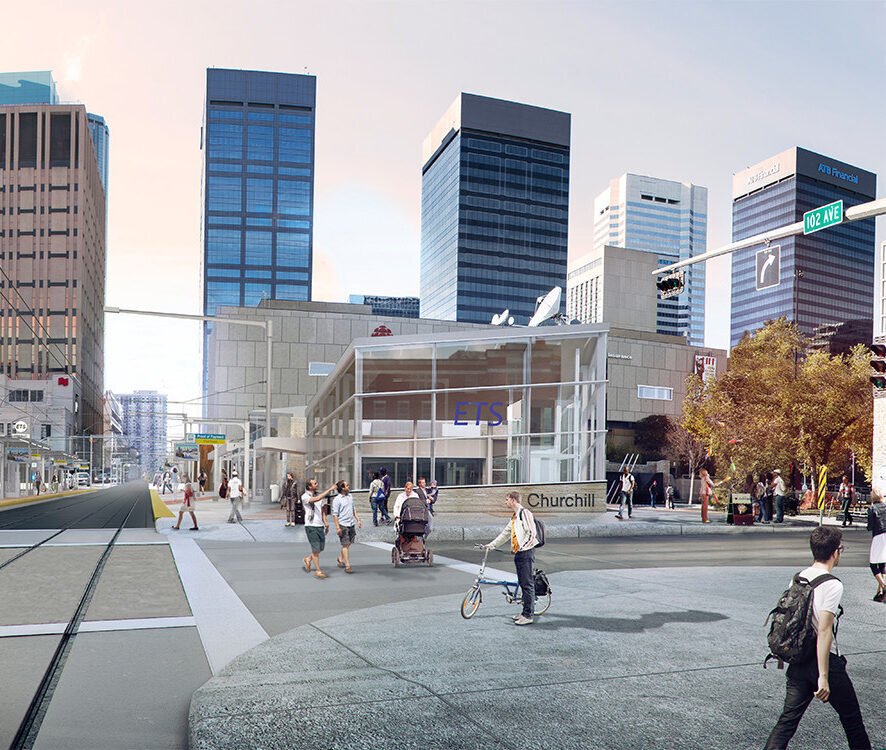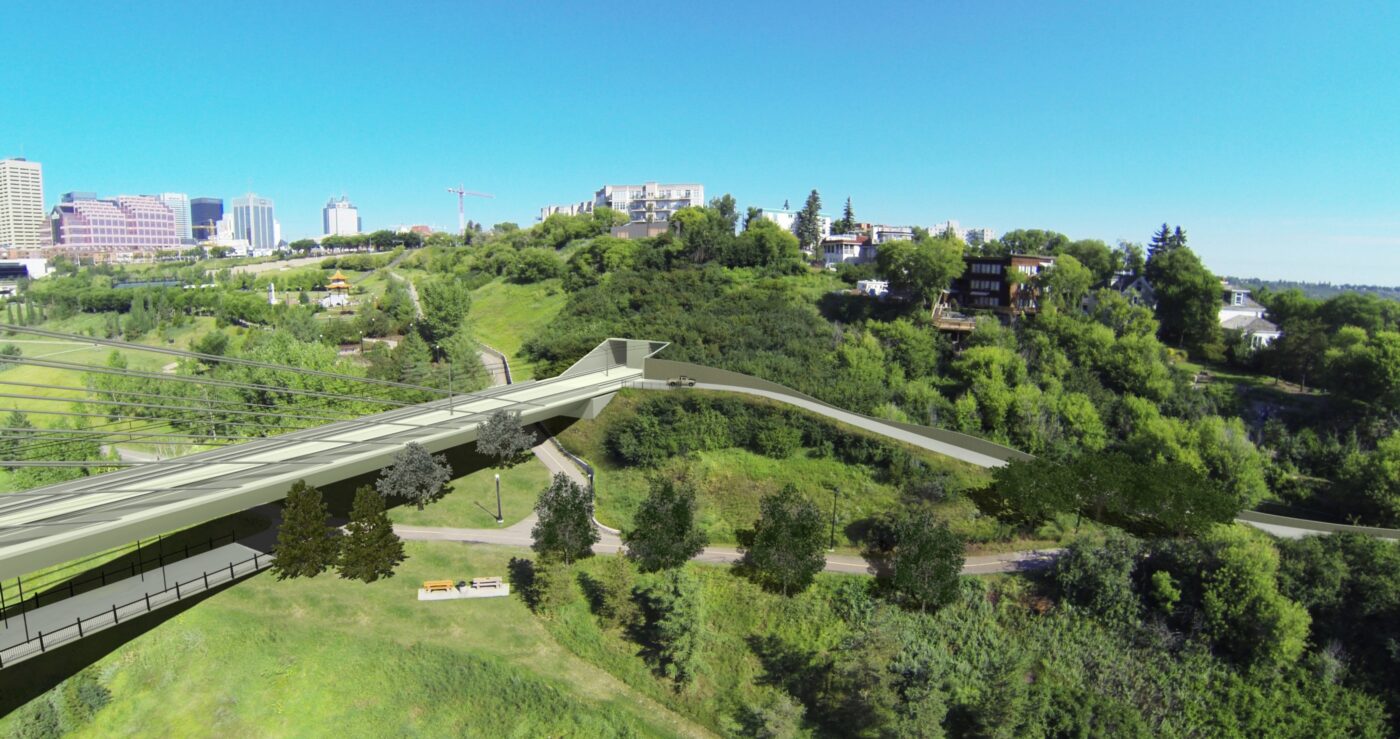At first glance, Edmonton’s new Valley Line LRT will look much like any of the dozens of light rail transit lines that snake through cities across North America. First glances, though, can be deceiving. Edmonton’s new 27-kilometre low-floor train system will be quite different from its cousins, and that’s because city planners, engineers and design consultants have adopted a design philosophy they’re calling sustainable urban integration or SUI.
Planning for Edmonton’s Valley Line began in 2011 with a simple question: what do we want the new transit corridor to look like? Planners already knew generally where it would be, but they had yet to settle on what it would be. Traditionally, transit has confined itself to moving people from A to B with little concern for community considerations beyond the engineering challenges. The city wanted something different. They wanted the new line to be integrated into the community, to be a destination as well as a transportation tool and to re-vitalize neighbourhoods, particularly downtown Edmonton. They wanted people who traditionally drove cars to choose it for their commuting needs.
“The first and last miles are key,” says Antonio Gómez-Palacio, an urban planner and designer at DIALOG, the Canadian design firm that is the lead planning consultant for the project. “The transformational potential of an LRT is in its ability to connect communities, revitalize businesses and reshape cities through transit-oriented development.”
Also key is community consultation. In Edmonton’s case, planners chose two levels of consultation – first through a broad set of community meetings and open houses where residents were free to offer any input they felt important. A deeper consultation sought input from a more involved group of participants, including stakeholders, business owners and professionals throughout the length of the design phase.
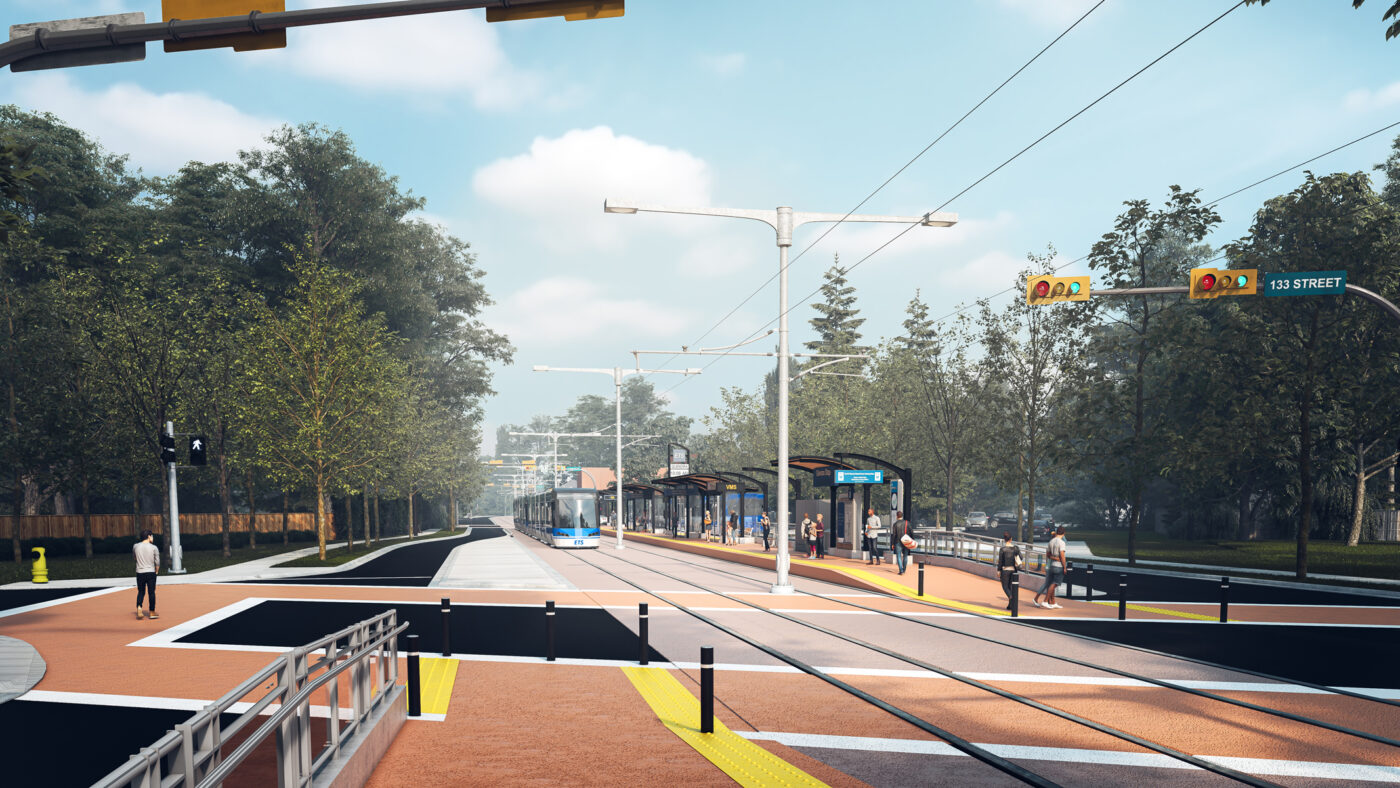
The result was agreement on some key features designed to appeal to users and better incorporate transit into the communities where they live. Among them, lines and stations at street level, eliminating the need for stairs or escalators or overbearing platforms, and bike lanes and walking paths that lead seamlessly to those transit stations with barrier-free access along the entire corridor.
In short, says Gómez-Palacio, SUI answers a fundamental question, “How do we make sure that when we’re building transit we’re also building community?”
It’s a philosophical shift from the traditional engineering-centred approach to transit corridors, which was largely focused on traffic instead of people, and was largely unconcerned with what existed between stations or around them. Despite billions of dollars being spent on transit mega-projects, it’s still rare to find systems that provide safe and reliable local connections that don’t involve unpleasant walks or drives to transit stations. Gómez-Palacio says building more car-based infrastructure to solve congestion is akin to “curing obesity by giving people bigger belts.”
